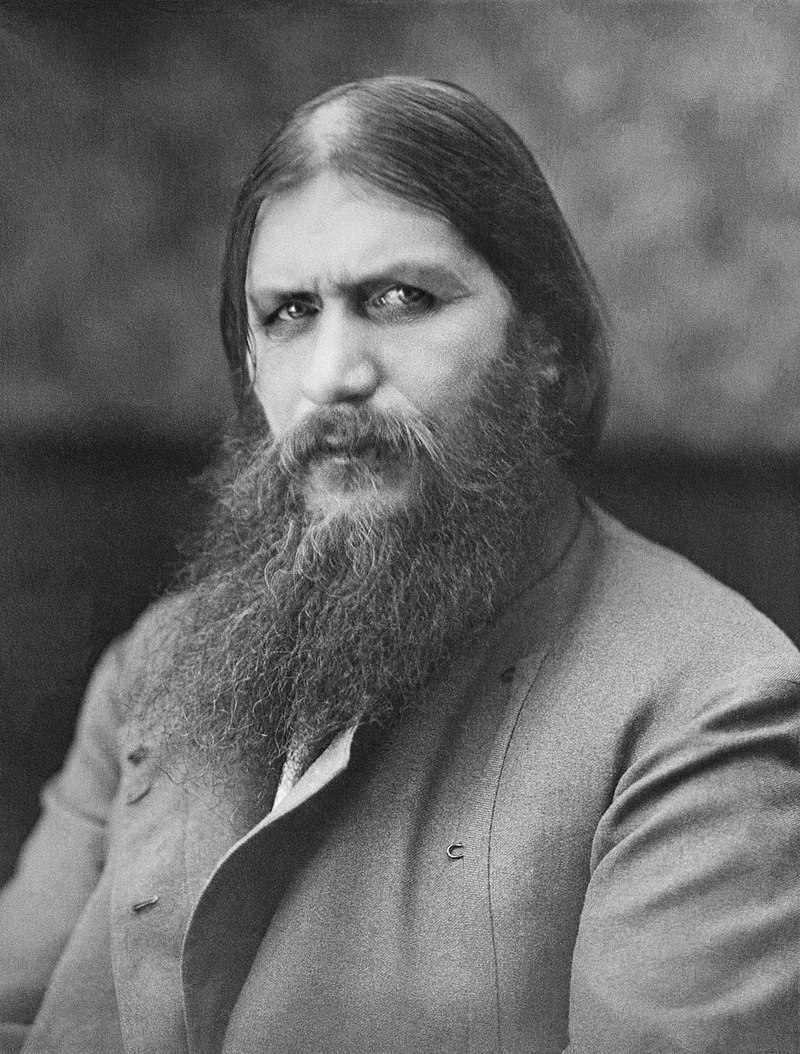

راهب السحر الأسود
– احد اسوأ رجال الدين سمعة في التاريخ
انه الراهب الروسي “راسبوتين”
– ولد في عام ١٨٦٩ في سيبريا
كان يستطيع ان يبرئ حصاناً بمجرد لمسه
اكتسب في مراهقته اسم “راسبوتين” وتعني الفاجر
بسبب علاقاته الجنسية الفاضحة
كانت النساء تتعلق به وتتجه اليه بمجرد نظرة ثاقبة من عينيه
حتى الرجال ما كان لهم القدرة على مواجهته والتحديق في عينيه طويلاً
وبعد ان اتهم بسرقة حصان هرب الي احد الاديرة وحصل على صفة الرهبنة
ثم اللتحق بجماعة تسمى “خاليستي” تعرف بممارساتها الجنسية الشاذة
في احدى المناسبات اعلن راسبوتين ان السيدة العذراء ظهرت له وامرته ان يتوجه الي العائلة الملكية في روسيا لتقديم المساعدة
ثم توجه الي العائلة الملكية وكون شبكة ضخمة من الاصدقاء والمعارف من الطبقات العليا
حتى اعتبروه في موسكو مرشداً روحي او رجل مقدس
وساعده في ذلك سحر شخصيته وقوتها
حتى ان الامبراطورة استعانت به في تخفيف الألم عن ابنها وريث العرش اثر مرض سيلان الدم وبالفعل نجح في ذلك
وبمجرد ان اثبت راسبوتين قوته الخارقة اصبح مستشار الامبراطورة وامين اسرارها
وكلما زاد نفوذه زاذ اعدائه خصوصاً انه اشتهر عنه انه كان يعيش حياة السكر والعربدة خارج القصر الملكي
حتى ان اثنين من الرهبان انصاره في ما مضى
اصبحا على اقتناع تام انه تجسيد حي للشيطان
وحاولا قتله ولكنه نجى منهما وابلغ الامبراطور والذي قرر نفيهما
لكنهما استطاعا تحريض احدى العاهرات على قتله
وبالفعل هاجمته بسكين لكنه نجى ايضا
واصبح اكثر قوة مما مضى
حتى انه بات باستطاعته تعيين واقالة الوزراء
وبعد كل هذه السلطة واثناء الحرب العالمية الاولى
اصبح اللوم كله يقع على كتف راسبوتين بسبب الاوضاع السيئة للبلاد لدرجة ان مدينة سان بطرسبرغ اصبحت تلقب بمدينة الشيطان
وفي يوم دعي راسبوتين لمقابلة ايرينا التي كان يشاع انها اجمل امرأة في المدينة
واثناء انتظاره قدم رجل له طعام وخمر مدسوس بهما سم يكفي لقتل خمس رجال
الغريب انه بعد ان اكل وشرب ظهر وكأنه محصن ضد السم
فاخرج سلاح ماري واطلق النار على راسبوتين
وقد كان من دبر هذا الاغتيال هم بعض امراء العائلة المالكة
فخرجا جميعا بعد اطلاق النار وغادروا المكان
لكن احد الامراء تذكر انه نسي معطفه
فعاد ليأخذه وقرر ان يفحص الجثة مرة اخرى
فإذا بالشيطان يفتح عينيه ويطبق على رقبة الامير بيديه
فصرخ الامير حتى سمعه باقي الامراء بالخارج فاسرعوا اليه واطلقوا ثلاث اعيرة نارية اخرى على راسبوتين
وقيدوه بالحبال وقرروا القاء جسده في نهر نيفا
ومن العجيب انه بعد اكتشاف الجثة بعد يومين
دل التشريح على ان راسبوتين كان مازال حياً عندما القي به في النهر
وان سبب موته الحقيقي هو الغرق وليس الرصاصات او السم
الاعجب من هذا كله ان راسبوتين قبل قتله بأيام ارسل رسالة الي الامبراطور الكساندرا يقول له فيها:
اذا قتلني اقاربك فسوف تقتل انت ايضاً
وهذا ما حدث بالفعل حيث ان بعد مقتل راسبوتين
اعدم قيصر روسيا وعائلته على يد الثوار البلشفيين
وصدقت نبؤة راسبوتين
#مجلةعشناوشفنا




